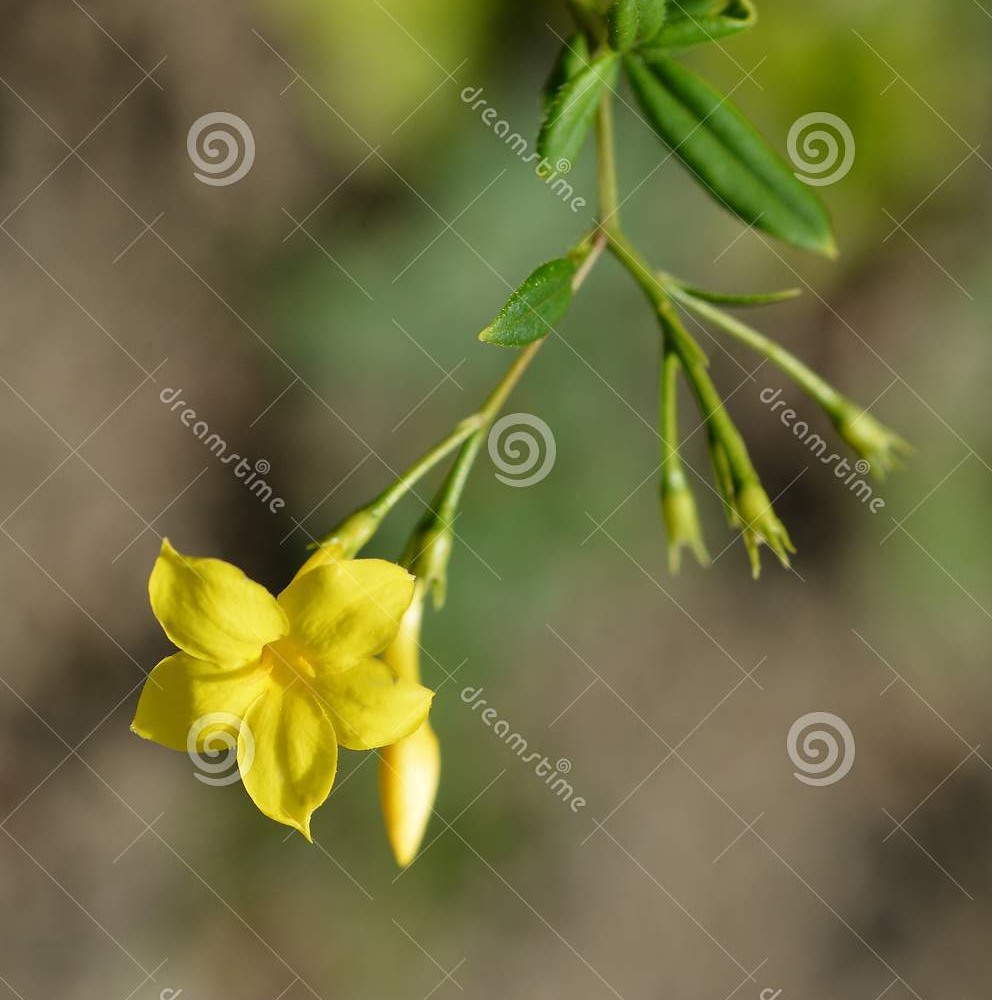Dwarf jasmine
(Chrysojasminum parkeri)

Description
Jasminum parkeri, the dwarf jasmine, is a species of plant in the family Oleaceae. It is a domed evergreen shrub, growing to about one foot in height, which bears a muddled bunch of small stems with tiny oval leaves. Teeming clusters of fragrant, tiny 5-lobed, yellow tubular flowers, from the axils of the leaves in early summer. Dwarf jasmine is a container plant or trained around topiary form. The plant was originally collected from Chamba District of Himachal Pradesh, India by Richard Neville Parker in 1920 as an ornamental plant and was sent to Kew botanical garden. It is highly endemic. Jasminum is a Latinized form of the Arabic word, 'yasemin' for sweetly scented plants. Jasmine (taxonomic name: Jasminum) is a genus of shrubs and vines in the olive family (Oleaceae). It contains around 200 species native to tropical and warm temperate regions of Eurasia, Africa, and Oceania. Jasmines are widely cultivated for the characteristic fragrance of their flowers. A number of unrelated plants contain the word "jasmine" in their common names (see Other plants called "jasmine"). Jasmine can be either deciduous (leaves falling in autumn) or evergreen (green all year round), and can be erect, spreading, or climbing shrubs and vines. Their leaves are borne in opposing or alternating arrangement and can be of simple, trifoliate, or pinnate formation. The flowers are typically around 2.5 cm (0.98 in) in diameter. They are white or yellow, although in rare instances they can be slightly reddish. The flowers are borne in cymose clusters with a minimum of three flowers, though they can also be solitary on the ends of branchlets. Each flower has about four to nine petals, two locules, and one to four ovules. They have two stamens with very short filaments. The bracts are linear or ovate. The calyx is bell-shaped. They are usually very fragrant. The fruits of jasmines are berries that turn black when ripe. The basic chromosome number of the genus is 13, and most species are diploid (2n=26). However, natural polyploidy exists, particularly in Jasminum sambac (triploid 3n=39), Jasminum flexile (tetraploid 4n=52), Jasminum mesnyi (triploid 3n=39), and Jasminum angustifolium (tetraploid 4n=52). Jasmines are native to tropical and subtropical regions of Eurasia, Africa, Australasia and Oceania, although only one of the 200 species is native to Europe. Their center of diversity is in South Asia and Southeast Asia.
Taxonomic tree:







